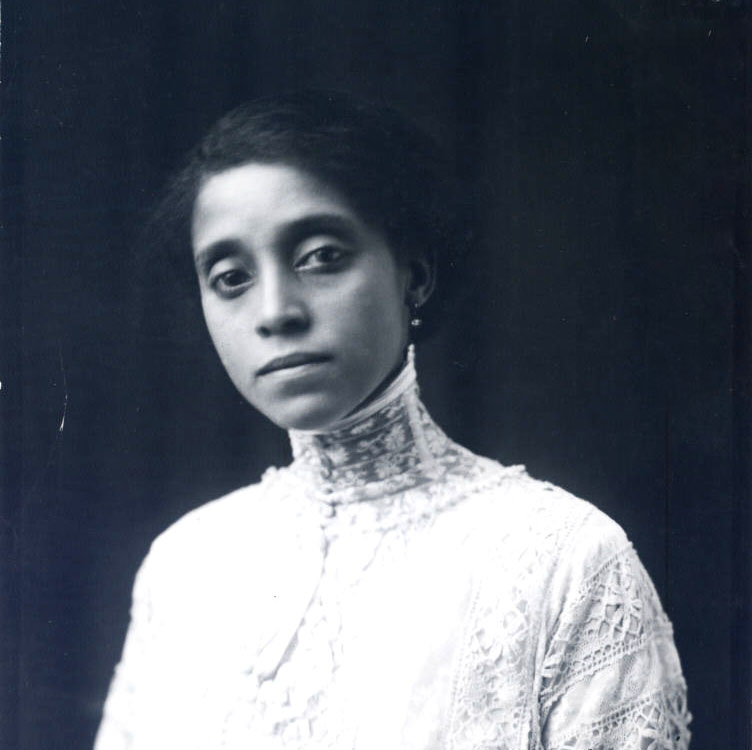
Diversity, difference, and social justice. Issues that are in the news and all around us, even in Lake County. Back in the days when Daly lived in Lake County, it may have seemed that there wasn’t much diversity. Many were Irish, but not everyone. Some came from the east, some from neighboring states, and after the Dustbowl, from Oklahoma. Among those who came from California was Sybil Harber – a black single mother who was a mid-wife. It’s said that she came to Lakeview on the recommendation of Bernard Daly. She arrived in Lakeview in the spring of 1888, just a year after Daly.
At the time, there were very few black people in Oregon, mostly because they weren’t welcome. As described in the Oregon Encyclopedia entry on Blacks in Oregon, there were two black exclusion laws. The first, adopted in 1844, mandated that blacks attempting to settle in Oregon would be publicly whipped, 39 lashes repeated every six months until they left the state. It was repealed in 1849, but a second exclusion law was then adopted. The first Oregon constitution, adopted in 1857 banned slavery but also made it illegal for blacks to be in Oregon, own real estate, make contracts, vote, or use the legal system. In other words, they couldn’t come as slaves or as free people. In the early 1900’s, Oregon had a well-established reputation as a hostile and dangerous place for blacks. At the time, Oregon had the largest Ku Klux Kan chapter west of the Mississippi. When Sybil Harber arrived in Lakeview, she was one of very few blacks in Oregon.
From all accounts, she was a welcome addition to the growing town of Lakeview. Jennie Carroll, curator of the Lakeview Museum said, “There was no hospital in Lakeview in the early 1900’s, so Aunt Sib’s nursery was not only for maternity cases but for sick people. In 1913 she helped nurse my own father for about three weeks. In fact, I think surgery was performed in her house. In talking to people they say she was kind and good, Nothing bad about her.”

In addition to being a mid-wife and caring for the sick, she did general housework for families and cooked on ranches. Later, she started a bakery but after the fire of 1900 changed it into a boarding house. Later she opened a nursery and operated it until 1915 when she suffered an injury and was hospitalized in Salem where she died on Armistice Day in 1918. Check out the photo of Sybil with Ted Conn, when he was a baby in her care.
Sybil’s son, Bert, who was 14 when they arrived in 1888, lived to be 93. One of Lakeview’s oldest residents, Bert was still working as the courthouse custodian when he was 75. Well liked in the community, Bert was known for his accurate memories of Lake County’s early days and people.
Sybil and Bert may have been “different” but they added much to the community, and so did many others from diverse backgrounds.
Justice for all…


Sam,
This is truly amazing information about Sybil Harber! What courage it must have taken for her and Bert to move to Oregon…much less Lakeview. Oye vey!
I have to add a small remembrance of Ted Conn: when I was an undergrad at SOU, I had a meeting with Mr. Conn and told him I was thinking about going into law. His words to me were (and I quote): “don’t go into law…lawyers are a dime a dozen.”
I’m glad I took his advice and stumbled into international education!
My husband and I own the home that Sybil Harber lived in. The house is at 21 North H Street in Lakeview, Oregon. We bought the house in April 2000, not knowing its full history. I thoroughly enjoy the photographs of Sybil. I think of her often. The house is in original condition, complete with the wavy glass windows. Just recently I discovered a cubby hole in the kitchen, where screens allowed outside air to enter and leave, cooling pies and breads. I also just re-wallpapered the bedroom that Sybil and Ted Conn are pictured in. I found bits of the wallpaper shown in the photo.
Another great photo of Sybil is on the cover of the OPB Primetime magazine, February 2019 issue. That same photo is in Luchetti and Olwell’s Women of the West page 114. (Lakeview had several professional photographers in Sybil’s day. I wish I knew who the photographer was that took this astounding photo.)
Thanks very much for the update on Sybil’s former house. As the saying goes, “if the walls could talk.” I’ll look for the photos you mention.
I am wondering why she stayed at the Oregon State Hospital for three years when it was intended for mentally ill. Reports say an accident and uterine cancer. I am not sure that hospital treated medical conditions and uterine cancer is hard to diagnosis. Thoughts?
She was born when Missouri was still a slave state and was until she was about 11. Wonder what brought her to California
Sarahsojourner@mac.com
Great questions, Sarah. Clearly, there’s much more to her story.